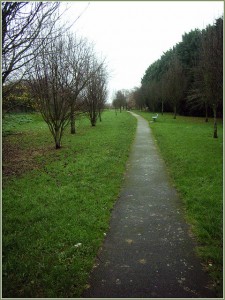 Here’s the thing about a table of contents: it’s a marketing device.
Here’s the thing about a table of contents: it’s a marketing device.
Yes, it serves the practical function of letting readers know what’s in your book. But it is also one of the first pieces after the cover and back cover that readers peruse before either making a purchase or walking away.
That means it’s important, much more important than is often assumed.
Your table of contents is like a path leading readers into your book. You want it to be as inviting as possible.
So, how do you write an inviting table of contents?
- Make it sticky. Think of your table of contents as your book’s headlines. The main purpose of a headline is to grab attention. For more on how to do this, I like to point people to a post by Copyblogger.
- Promise something. Your table of contents is an opportunity to speak directly to the needs of your readers. Make sure you’re offering them something valuable.
- Check to see if the chapter titles match the content. This might seem obvious, but oftentimes the chapter title is the first thing we give to a chapter, and then the content happens. Go back now and see if the chapter titles you originally gave still sync with the actual content.
- Consider using both chapter titles and subtitles. This isn’t always necessary, but in many cases I encourage authors to use a “grab ‘em by their throats” chapter title and then follow it up with a descriptive and hopefully still enticing subtitle.
- Don’t forget the back matter. Think of appendixes, notes, study tools, etc., as bonuses. They are often the most practical pieces of your book, and thus they serve a terrific promotional function. These are important for the same reason the P.S. is important in a fundraising letter. Everyone reads the P.S. first.
- How do the chapter titles relate to each other? Do they show a progression of thought? Does one lead into the other. Do they suggest an experience or journey that the reader is about to take? And lastly, does the journey they hint at make sense? In other words, this exercise sometimes prompts writers to rearrange their chapters, which is great! It all needs to make sense.
Below are three chapter titles:
Give It to ‘em Good
Why Forgiveness Matters
The Spirituality of Jacob
Now I’m going to critique each and offer an alternative.
“Give It to ‘Em Good.” This title is too vague, and not quite catchy enough. Let’s assume this is a chapter from a book on giving presentations, and the chapter is about maximizing your preparation to wow your audience. An alternative chapter title might be “Wowing Your Crowd: Easy Steps to Prepare for the Talk of Your Life.”
“Why Forgiveness Matters.” This is concise and even somewhat descriptive, but it’s also obvious. Of course forgiveness matters! Better: “The Key to Vibrant Relationships: Why Forgiveness Is So Important to Living Well with the People around You”
The Spirituality of Jacob: This title is descriptive, but it does nothing to get me interested. And that’s too bad because Jacob was one interesting dude. Try this on for size: “Heavenly Dreams: How to Be a Thief and Still Have a Vision That Would Make Pink Floyd Blush!” Well, that’s a little over the top, perhaps, but you get the idea.
Having trouble coming up with snappy titles and subtitles? Throw a pizza party, gather some creative friends, pick up one of those big pads with paper you can stick to the wall, explain what each chapter is about, and brainstorm away! (Pssst: you can always tweak the ideas you get later.)
Your table of contents has the potential not only to inform readers but also to get them excited about what’s in your book. Don’t miss the opportunity!

Lesson learned: use : in all chapter titles
This is actually really true though – the table of contents IS a great way to decide whether a book has decent content. Also, it’s helpful (maybe not for marketing, but for your readers) to have a really great index. Can make or break a book.
Indexes can be useful, particularly in books where the various pieces of content would otherwise be difficult to locate. But again, here is where a good table of contents can do a lot of work for the author. Functionally, indexes are simply souped-up tables of contents.
“Why Redheads Are Flamingly Awesome and How To Behave In Our Presence”
Amen, and amen! Ha!
That is great advise, I will take to heart! So true, yet I never thought of it before.
Glad it was helpful to you!